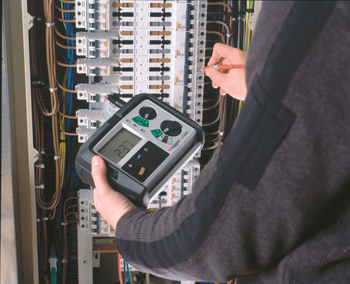Fault Loop Impedance Testing
saurabh engineering services
Fault Loop Impedance Testing

Loop impedance testing is a method of measuring the impedance of a circuit’s loop, which includes both the circuit’s wiring and any connected loads. The loop impedance test is performed to determine the safety and suitability of an electrical circuit for use.
The main reason for earth loop impedance testing – which is often simply called loop testing – is to verify that, if a fault occurs in an electrical installation, sufficient current will flow to operate the fuse or circuit breaker protecting the faulty circuit within a predetermined time.
An fault loop impedance test is conducted to make sure that, if a fault occurs in an electrical circuit, the fault current will strong be enough to set off the circuit protection. If a fault current is left undetected, circuits can overheat and catch on fire.
The loop impedance test involves injecting a test current into the circuit and measuring the resulting voltage drop. The impedance of the circuit can then be calculated using Ohm’s law. The calculated impedance is compared to the maximum allowable value specified by the relevant electrical safety standards or regulations. If the measured impedance is too high, it indicates that the circuit may not be safe for use, and further investigation is required to identify and rectify the underlying issue.
In addition to ensuring the safety of electrical circuits, loop impedance testing can also help to diagnose faults in a circuit. For example, a high measured impedance may indicate a fault such as a loose connection or damaged wiring. By identifying and rectifying such faults, the reliability and performance of the circuit can be improved.
This Test is recommended for testing of new installation as well as older installation.
SES
Need Help?
Don’t hesitate to contact us for more information about company or service.
